Buffalo II (Auxiliary Cruiser)
1898-1927
The popular name for the North American Bison, a bovine mammal that ranged widely across the United States.
II
(Screw Steamer: displacement 6,530; length 406'1"; beam 48'3"; draft 20'9"; speed 14.5 knots; complement 350; armament 2 5-inch, 4 4-inch; class Buffalo)
The steamship El Cid was built in 1892 at Newport News, Va., by the Newport News Shipbuilding & Dry Dock Co. Acquired by the Brazilian government for conversion to an auxiliary cruiser, she was renamed Nictheroy.
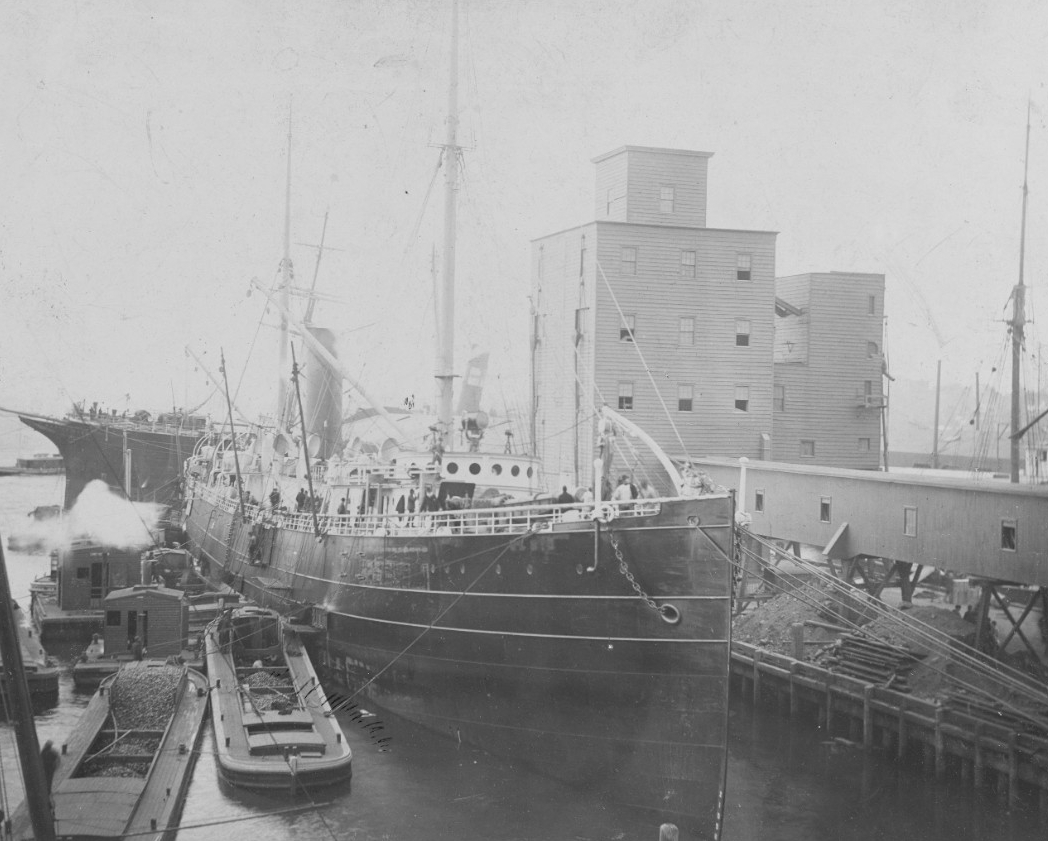
Purchased by the U.S. Navy from the Brazilian Government on 11 July 1898, Nictheroy was renamed Buffalo; commissioned in ordinary a week later; fitted out as an auxiliary cruiser at New York Navy Yard, Brooklyn, N.Y.; and placed in full commission there on 22 September 1898, Cmdr. Joseph N. Hemphill in command.
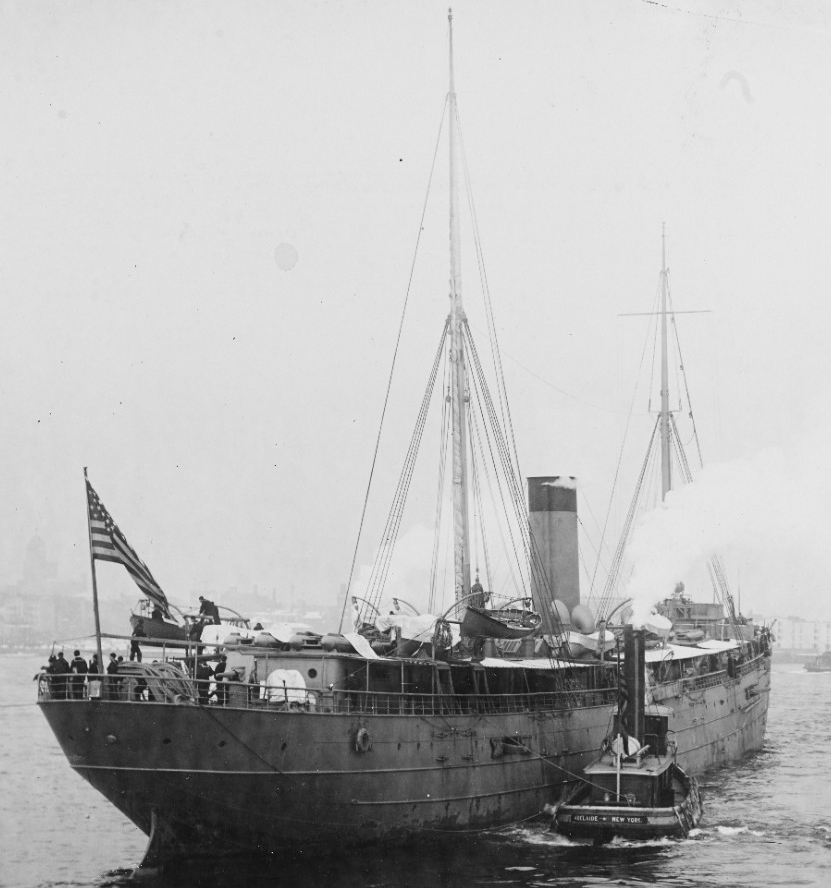
Buffalo’s first voyage while in commission was to Newport, R.I. (9-17 November 1898). She then returned to New York, where she arrived on 18 November. She then departed New York on 7 December bound for the newly-acquired, formerly Spanish-held, Philippine Islands (P.I.) with troops and supplies. Initially steaming south to Fort Monroe, Va. (9-10 December), she then steamed directly across the Atlantic and into the Mediterranean Sea, finally making landfall at Port Said, Egypt, on 28 December. Remaining there into the New Year, she departed on 4 January 1899, transiting the Suez Canal en route to Colombo, Ceylon [Sri Lanka] (17-21 January). Proceeding eastward, she steamed to Singapore (26-27 January) and reached Manila, P.I. on 1 February. She remained there until 23 March, when she got underway for her return to the U.S. Returning by the same route by which she had steamed to the Philippines, in reverse, Buffalo touched at Singapore (28 March-3 April); Suez, Egypt (18 April); Port Said (19 April); Gibraltar (25 April), and stood back in to New York on 7 May. With her return she was placed out of commission on 3 July 1899.
Buffalo was placed back into commission on 2 April 1900, Cmdr. Charles. T. Hutchins in command, to serve as a training vessel. In this capacity she steamed to the Philadelphia (Pa.) Navy Yard (21-24 April) to embark 90 landsmen, continuing to Norfolk Navy Yard, Portsmouth, Va., where she embarked another contingent of 350 landsmen (25-27 April). She then operated in the waters near the Virginia capes until clearing Hampton Roads on 3 May, bound for Fayal, Azores. Arriving on 14 May, she remained until 20 May, then moved on to Gibraltar (24 May-4 June) and Gravesend, England (9-10 June). While at Gravesend, she received orders dispatching her to return to the Philippines. She shifted to Southampton, England (11-21 June) to transfer the embarked landsmen to the protected cruiser Albany. After her departure from the English coast, she proceeded to Gibraltar (25 June); Valetta, Malta (28-30 June); Port Said (3 July); Colombo (15-17 July); Hong Kong (27-29 July); Taku [Dagu] Forts, China (3-6 August), before reaching Cavite, P.I. on 14 August. After a week, Buffalo was again underway headed for a return to New York. Making her way back to the U.S., she touched at Singapore (26 August-4 September 1900); Colombo (10-13 September); Valetta (30 September-4 October); and Gibraltar (8 October) before standing in to New York on 20 October. Entering the Navy Yard, she underwent overhaul until 15 December. Upon clearing, she shifted to Tompkinsville [Staten Island], N.Y. (15-17 December). Going to sea, she then proceeded to Lynnhaven Bay, Va. (19-21 December) and Hampton Roads (21-24 December), before clearing the Chesapeake Bay and steaming to the Caribbean to visit Trinidad, British West Indies (30 December- 2 January 1901); La Guayra, Venezuela (3-5 January), and Port Castries, St. Lucia (7-8 January) before steaming eastward for a return to the Philippines. Touching at Gibraltar (18-22 January); Port Said (29 January); Suez (30 January-2 February); Colombo (13-15 February); and Singapore (20-21 February), she reached Manila on 26 February. Remaining there until 7 March, she steamed to San Fernando de la Union, P.I. on 8 March, then continued on to Hong Kong (10-15 March). Upon departing the British Crown Colony, she steamed up the Yangtze River to visit Woosung [Wusong] (18-21 March). Standing down the Yangtze, she raised Manila on 25 March. Getting underway again on 4 April, the ship began her voyage to return again to New York. En route she touched at Colombo (13-14 April), Suez (25 April) and Port Said (26 April) and making her return to New York, where she entered the Navy Yard on 13 May.
Buffalo cleared the yard on 17 July 1901 for another training cruise. After a period in the waters off the northeast coast – Gardiners Bay (19-24 July), Newport, R.I. (24-27 July); Boston, Mass. (28-30 July) – before crossing the Atlantic to Europe. Reaching Gibraltar (11-19 August), she proceeded to visit Peel, England (24-26 August); Douglas, Isle of Man (26-27 August); Greenock, Scotland 28 August-7 September); Christiana, Denmark (17-25 September); Kronstadt, Russia (30 September-5 October); Kiel, Germany (8-12 October); Plymouth, England (15-21 October); Funchal, Madeira; Santa Cruz de Tenerife, Canary Islands. Crossing back across the Atlantic, she steamed to San Juan, Puerto Rico (P.R.) (21 November) and St. Thomas, Danish [U.S.] Virgin Islands (22-24 November) before returning to San Juan (25 November-2 December). Clearing on 4 December, she cruised to Fort de France, Martinique, French West Indies (4 December), back to San Juan (6-12 December), then on to Port of Spain, Trinidad, British West Indies (15-29 December). She then conducted target practice off the Mona Passage on New Year’s Eve, then shifting to Samana Bay, Dominican Republic (D.R.), she conducted additional gunnery exercises (1-17 January 1902). Remaining in the Caribbean, she visited San Juan (18-27 January), Guantanamo Bay, Cuba (30 January-1 February); Kingston, Jamaica (3 February) before returning to the U.S. at New Orleans, La. (7-16 February). Clearing the Mississippi River, she steamed for Cuba, calling at Cienfuegos (19-26 February) and Havana (28 February-4 March), before transiting back to the U.S. visiting Pensacola, Fla. (6-18 March); Tampa, Fla. (24-26 March); and Key West, Fla. before standing in to Hampton Roads on 12 April. She entered the Norfolk Navy Yard on 15 April and cleared on 8 May to steam to New York. Arriving the next day, she underwent preparations for another passage to the Asiatic Station.
Buffalo again stood out from New York on an easterly course bound for the Philippines. Transiting via Gibraltar (16-18 June), she continued on to Malta (21-28 June) conducting target practice while there. Afterward, she proceeded to Port Said (1-2 July) and through the Suez Canal to Colombo (15-20 July) and Singapore (25-28 July) and arriving at Cavite on 2 August. After a week in port, she departed bound for Japan. She arrived at Nagasaki on 14 August and Buffalo departed the next day in company with Kentucky (Battleship No. 6), Helena (Gunboat No. 9), New Orleans (Protected Cruiser), and Vicksburg (Gunboat No. 11) for Woosung (17-19 August). Getting underway again, this time in company with Monterey (Monitor) and Wilmington (Gunboat No. 8) she shifted to Hong Kong (22-25 August). Clearing the Crown Colony, she steamed to Singapore in company with Rainbow (Distilling Ship) and Monadnock (Monitor No. 3). Touching at the island at the southern end of the Malay Peninsula on 30 August, she continued on her voyage back to the U.S. making stops at Colombo (4-6 September); Suez (18 September); Port Said (19 September) and Messina, Sicily, Italy (23-25 September). She then steamed in company with Albany to Gibraltar (28-30 September) where she took on sailors for transport back to the U.S. after her departure from “The Rock,” Buffalo did not make landfall again until she stood in to Tompkinsville on 12 October. The next day she crossed the Verrazano Narrows to the New York Navy Yard, where she docked for a week. Undocking on 20 October, she steamed to the Norfolk Navy Yard where she conducted training from her arrival on 21 October to 5 December. She returned to Tompkinsville on 6 December and conducted training there until the 12th. Departing that day in company with Newark (Cruiser No. 1), the ships steamed to Samana Bay to conduct gunnery training until 20 December, when she departed for Sanchez, D.R. arriving that day, she remained two days and then moved on to Kingston, where she spent the Christmas holidays (24-26 December). Underway again on Boxing Day she steamed to Pensacola (30 December).
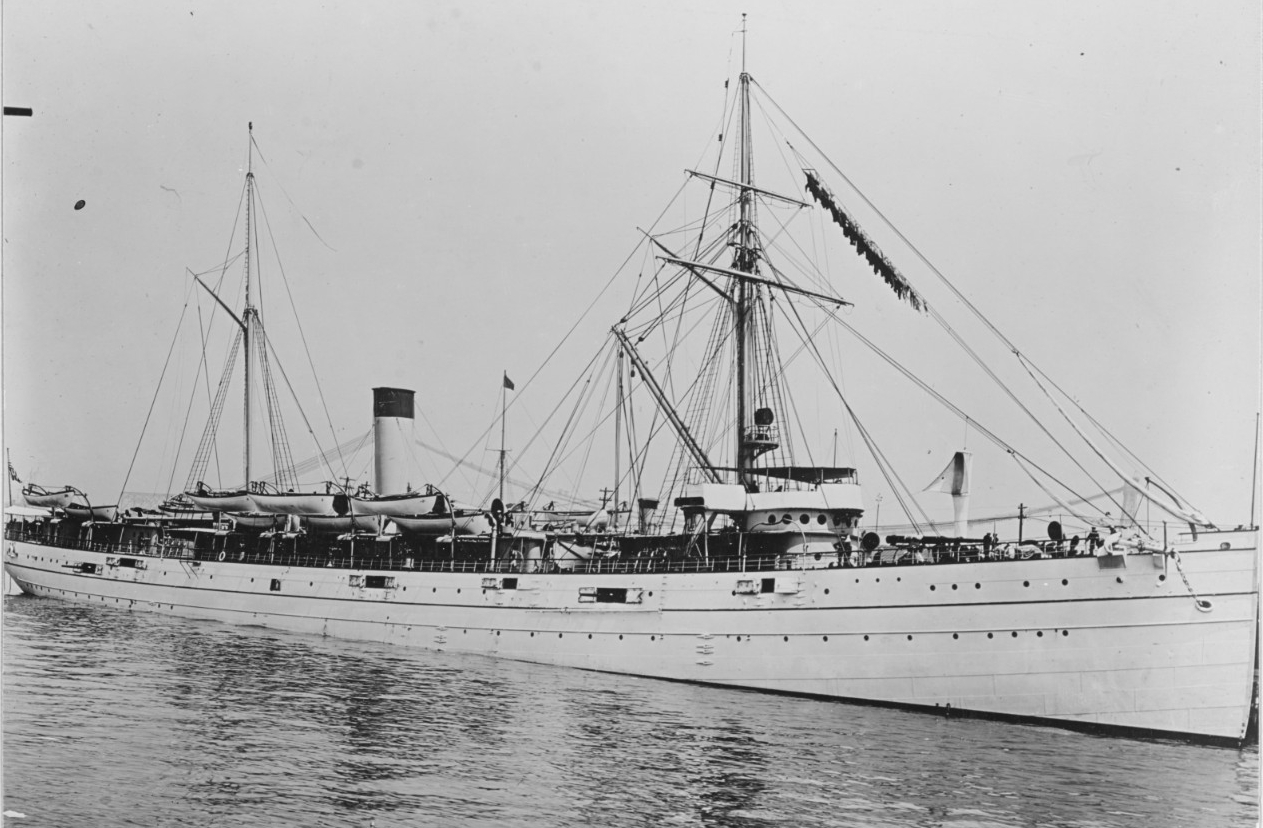
Buffalo stood at Pensacola until 13 January 1903. Getting underway again, she steamed to Port Royal S.C. Going to sea on 25 March, she steamed northward to New York, reaching on 28 March. Entering the navy yard there upon her arrival, she remained there until 9 April preparing for another passage across the Atlantic. Clearing the yard, she steamed directly into the Mediterranean and stood in to Villefranche, France (23 April-13 May). When she resumed operations underway on 13 May, she steamed across the Mediterranean to Algiers, French Algeria (15-23 May) before visiting Gibraltar (25-27 May) en route to a return to New York, where she moored on 8 June. While at New York, she was attached to the Atlantic Fleet Training Squadron on 6 July. Weighing anchor and making turns, Buffalo cleared New York on 14 July and steamed to Hampton roads (16-18 July) en route to the West Indies and South Atlantic to visit Port of Spain (23-29 July), Bahia, Brazil (8-13 August), and St. Lucia (22-24 August) before standing in to Tompkinsville on 30 August. The next day she shifted to Brooklyn and entered the New York Navy Yard where she docked until 8 October. Going to sea, she teamed to Hampton Roads (9-17 October) and Boston (28-20 October) before making a return to Hampton Roads (26 October-12 November). Steaming between Cape Henry and Cape Charles on 12 November, she raised Guantanamo Bay, Cuba (16-17 November), then shifted to Santiago de Cuba (17 November) and Kingston on 17 November. She then moved on to Bahia Honda, Fla. (21 November) and Havana (21-23 November). Touching again at Bahia Honda (24 November), she made her return to Hampton Roads on 27 November. Clearing the Virginia capes on 5 December, she steamed northward to touch at Tompkinsville (7 December), en route to the New York Navy Yard that same day. Undocking on 17 December, she steamed directly to Key West, arriving on 23 December.
On 12 November 1903 the First Torpedo Flotilla, [Bainbridge (Torpedo Boat Destroyer No. 1); Barry (Torpedo Boat Destroyer No. 2); Chauncey (Torpedo Boat Destroyer No. 3); Dale (Torpedo Destroyer No. 4); and Decatur (Torpedo Boat Destroyer No. 5)] departed Hampton Roads, Va., bound for distant service with the Asiatic Squadron to be based in the Philippines. Convoyed by Baltimore (Cruiser No. 3), they arrived at Key West, Fla. on 18 December after touching at Port Royal. While at Key West, Buffalo relieved Baltimore as the flotilla's escort for the remainder of the journey to the Far East. Departing Key West on 23 December, the force spent Christmas Day at sea and arrived at San Juan, Puerto Rico (P.R.) on 29 December and spent the New Year’s holidays in port there. Resuming their eastward passage across the Atlantic on 6 January 1904, the flotilla reached Las Palmas, Gran Canaria, Canary Islands on 18 January. Clearing the island on 24 January, the ships proceeded to Gibraltar (27-31 January); Algiers, French Algeria (1-7 February); and Valetta, Malta (9-21 February).
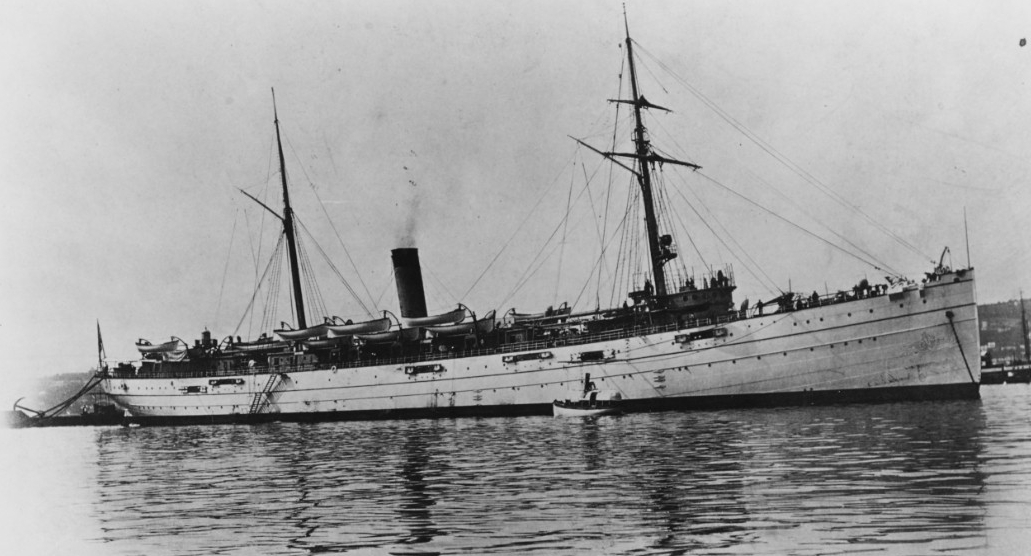
Buffalo and her consorts had a twelve-day layover while Barry went into dry dock to have her propellers repaired after they had been damaging while mooring. Upon completion of the required repairs, they continued on to Port Said, Egypt (25-26 February 1904), transited the Suez Canal to Suez, Egypt (28-29 February) before steaming down the Red Sea to Aden (4-9 March). Steaming out of Aden on the 9th, the flotilla crossed the Arabian Sea to Bombay [Mumbai], India (15-23 March), then proceeded to the British possessions at Colombo, Ceylon [Sri Lanka] (26-27 March) and Singapore (3-9 April) before steaming through the South China Sea to her new station in the Philippine Islands (P.I.). The flotilla and its escort stood in to the Navy Yard at Cavite, P.I., on 14 April.
Buffalo remained at Cavite until 20 April 1904, when she steamed to Singapore (24-28 April) before making a return to the U.S. via Guam (7-10 May) and Honolulu, Hawaiian Territory (21 May-4 June 1904), Panama City, Panama (21-29 June), before steaming into San Francisco Bay on 12 July, en route to entering the Navy Yard at Mare Island the next day. She cleared the yard on the 26th, and made a brief run to Santa Barbara, Calif. before returning to Mare Island. Standing out from the yard on 30 August she steamed north to the Alaskan Territory. Touching at Unalaska on 6 September, she made her way to Midway Island (26 September) and then reached Honolulu on 30 September. While there, Buffalo received orders detaching her from the Atlantic Training Squadron on 8 October. Departing Honolulu on 20 October, she made her transit back to San Francisco via Midway (24-25 October) and arrived on 3 November. Standing there, she entered the yard at Mare Island on 24 November and remained there undergoing maintenance until 14 January 1905.
Buffalo shifted to Sausalito, Calif., on 16 January 1905, then cleared for San Diego (19 January-4 April). During this time, she was temporarily assigned to the Pacific Squadron on 24 February, but then she received orders detaching her from the squadron on 4 March. Standing out of San Diego on 4 April, she reached Mare Island, two days later. She was placed out of commission there on 24 April.
Buffalo was placed back into commission on 17 November 1906, Cmdr. John F. Parker in command. She would remain in the waters of San Francisco Bay into July 1907. Finally clearing Mare Island on 16 July, she steamed to the Pacific Northwest and reached the Puget Sound Navy Yard on 19 July. Entering the yard, she remained there until 16 August when she stood out and steamed farther north. Raising Dutch Harbor in the Aleutians (22-23 August), she cruised Alaskan waters and those of the Bering Strait, before arriving at Seward, Alaskan Territory (20 September-31 October) and Esquimault, British Columbia, Canada (1-5 November). She then stood in at Bremerton, Wash. on 5 November and remained there through the Christmas and New Year’s holidays.
Buffalo received a telegraph to report to the Commander in Chief, Pacific Fleet on 2 January 1908. She cleared Bremerton on 7 January and made her return to San Francisco on the 11th. She would spend the following weeks in San Francisco Bay until standing out on 19 February and steaming southward to Magdalena Bay, Baja California, Mexico. Arriving on 23 February, she spent the ensuing weeks shuttling between the bay and San Diego, providing logistical support for the “Great White Fleet” as it conducted gunnery training while circumnavigated the globe (16 December 1907-22 February 1909). Making her return to San Diego (10-11 April), she steamed to San Francisco Bay (12-15 April) and docked at Mare Island (15-27 April). Clearing the yard on 27 April, she touched briefly at San Francisco and then steamed to Panama City, reaching on 7 May. Departing on the 15th, she charted a course back to San Francisco Bay via Bartolome Bay, Mexico (23-25 May); Cerros Island, Mexico (25 May); Santa Catalina, Island, Calif. (27 May); and Monterey, Calif. (28-29 May), reaching on 29 May. She stood out from the Golden Gate on 7 June and steamed again for Panama City (17-22 June) then made her return to San Francisco on 3 July. She remained in the bay until 22 August, when she went to sea to steam north to Seattle (25-29 August) and Esquimault (29-30 August). Back to San Francisco on 2 September, she cleared again on the 15th, and steamed to Panama to meet the transport Prairie and discharge a draft of replacements (28 September-3 October). Returning to San Francisco on 15 October, she embarked a draft from the training ship Pensacola for transfer to Charleston (Cruiser No. 2). Clearing the bay on 20 October, she steamed to Puget Sound where she discharged the draft (24-27 October). Making her return to San Francisco, she awaited orders there (31 October-3 November). She docked at Mare Island for a fortnight (3-17 November), then clearing the bay again on 19 November, she proceeded to Magdalena Bay with mail and stores (23 November-1 December), then returned to Mare Island for further repairs (5-20 December). Taking another draft on board, she steamed to Puget Sound, where she spent Christmas Day (24-28 December), she embarked a contingent of marines for transfer to Honolulu. Returning to San Francisco (31 December), she embarked an additional contingent of marines and departed on 6 January 1909, bound for the Hawaiian Territory.
Buffalo arrived on 13 January 1909 at Honolulu and discharged the marines and refueled to 28 January. She then proceeded to San Francisco to await further orders, arriving on 4 February. She shifted to Mare Island (19 February-14 March) to take on stores and ammunition for the Pacific Fleet. Standing out from San Francisco on 14 March, she steamed to Magdalena Bay (12-14 April) to discharge her cargo to the Pacific Fleet drilling there. She continued southward and rendezvoused with South Dakota (Armored Cruiser No. 9) and Colorado (Armored Cruiser No. 7) at Amapala, Honduras (20-21 April). Proceeding southward, she met Albany off Corinto, Nicaragua on the 21st. Moving on to Panama, she exchanged drafts with Prairie (23-28 April). Parting, she returned to Corinto and Amapala to exchange sailors with the ships there on 1 May and then made her return to San Francisco on 10 May. Entering Mare Island on 13 May, she docked until 26 May. Clearing the yard, she shifted to California City, Calif. and coaled (26-27 May). Clearing San Francisco on 27 May, with orders dispatching her to the Asiatic Station, Buffalo steamed to Honolulu (4-10 June) and Guam (23-27 June) before reaching the Asian mainland at Woosung on 3 July. Underway again on 7 July, she shifted to Hong Kong (10-13 July) before transiting the South China Sea to the Philippines. Arriving at Cavite on 16 July, she spent the next week moving between that navy yard and the one at Olongapo, before departing Cavite on 25 July, bound for Guam. She was at Apra Harbor, Guam (30 July- 4 August) and then continued on to Dan Francisco via Honolulu (14-23 August). She steamed into the bay, and then moored at San Francisco (29-30 August), before entering the yard at Mare Island. She underwent repairs until 28 October. Clearing the yard, she shifted to California City and coaled (28-31 October). Departing after refueling, she went to Pichilinque Bay, Mexico, where her crew repaired the coaling station there (5-21 November). Moving on to Panama (29 November-17 December), she embarked a regiment of marines for transport to Corinto. Arriving at the Nicaraguan port on 20 December, Buffalo disembarked the regiment and remained on station there in support until 16 March 1910.
Buffalo, having re-embarked the marine regiment from Corinto, shifted to Panama, where the regiment was discharged. (19 March-15 April 1910). She then steamed to Magdalena Bay (24-30 April), where she disinterred naval dead and transferred target material. Making her return to San Francisco on 4 May, she entered the yard at Mare Island on the 5th, and docked for repairs and overhaul until 20 July. Clearing San Francisco on 22 July, the ship cruised along the coast with the California Naval Militia embarked making port visits en route and returning to San Francisco on 1 August. Shifting to Mare Island later that same day, she began taking on stores to be carried to the western Pacific. Displacing to San Francisco, she embarked a draft for Pensacola on the Asiatic Station (6-7 August) and departed on the latter day. Proceeding westward, she made port visits to Honolulu (14-19 August), Guam (1-2 September), and Cavite (7-9 September), before mooring at Manila (9-28 September). She then shifted back to Cavite, where she remained, awaiting the arrival of the Asiatic Fleet (28 September-7 November). Making her way to Olongapo, she towed a target raft for gunnery practice (8-9 November), then returned to Cavite later on the 9th. After embarking a draft of sailors bound for a return to the U.S., Buffalo departed on 15 November bound for California. En route she called at Guam (21 November) and Honolulu (4-8 December) and stood in to San Francisco on 16 December. The next day she shifted to Mare Island and docked at the yard. She underwent repairs into February.
Buffalo undocked on 21 February 1911 and upon clearing the yard shifted to San Francisco, where she remained until 7 March. She returned to Mare Island to take on stores and embark a draft of marines. Departing on the 10th, she steamed to San Diego to rendezvous with the Pacific Fleet. Arriving on 12 March, she debarked the marines and unloaded the stores. Operating from San Diego, she conducted an exercise run with Maryland (Armored Cruiser No. 8) on 28 March. Clearing San Diego three days later, she steamed to Mare Island and entered the navy yard on 1 April, where she docked for repairs until 26 April. Moving to San Francisco upon clearing the yard, she took on stores for the erecting and repairing of wireless stations in the Alaskan Territory. Standing out of San Francisco on 30 April and steaming northward, she worked on the wireless stations at Kodiak (6-13 May and 25 May-5 June); Cordova (14-24 May); St. Paul, Pribilof Islands (8-21 June); and Dutch Harbor (22-27 June) before coaling at Unalaska (27 June-3 June). She then continued on to St. Paul Island (4 July), Unalaska (5-10 July & 26 July-11 August), Kiska (15-18 July); Nome (21-23); and Sitka (15-20 August), before making her return to the continental U.S., by touching at Smiths Island, Wash. (23 August) en route to her arrival at Mare Island on 25 August. Shifting to San Francisco for liberty (28 August-18 September), she then docked at Mare Island for repairs (18 September-25 October). After undocking, she moved to San Francisco (25-27 October) before making a run southward along the Pacific coast to San Diego (29-31 October) and San Pedro, Calif. (1-3 November), before returning to San Francisco (5-6 November). She then returned to Mare Island for further repairs (6 November-8 December). Returning to San Francisco to embark a draft of sailors for the Asiatic Squadron, she ship got underway on 19 December and touched at Honolulu (26-27 December) before steaming directly to Shanghai, arriving on 12 January 1912.
Buffalo lay at Shanghai until 21 January 1912. Then, getting underway, she steamed to Woosung (21 January), Amoy (24-25 January), and Hong Kong (26-28 January), exchanging sailors at each port. Clearing the Chinese coast, she proceeded to Olongapo (30 January-2 February) to transfer marines and then on to Manila (2-11 February) to participate in Carnival in the Philippine capital. Shifting to Cavite (11-13 February), she transferred sailors and coaled. Getting underway, she departed on 13 February. Bound for China, she visited Chefoo (18 February-5 March and 10 March-20 April); Taku (7-10 March and 21-25 April), and Woosung (27 April). Buffalo then steamed for Cavite (1-6 May), before touching briefly at Olongapo (6 May), en route to a return to the U.S. Stopping at Honolulu for coal and stores (21-23 May), she reached San Francisco on 29 May. A day after her arrival, she displaced to Mare Island to await further orders (30 May-18 June). She then cleared Mare Island on 19 June to tow the submarines A-3 (Submarine No. 4) and A-5 (Submarine No. 6) to Puget Sound in convoy with the screw steamer Fortune to Puget Sound. Touching at New Dungeness Bay, Wash. (25-26 June), they reached the Navy Yard at Puget Sound later on the 26th. Remaining for three days, she got underway for a return to the navy yard at Mare Island, reaching on 2 July. Entering the yard there, she remained until 30 October undergoing repairs. Clearing the yard, she remained off the Mare Island Lighthouse until 10 November, when she departed bound for Corinto (22-23 November), en route to Panama (25 November-4 December). After getting underway on 4 December, she proceeded to Corinto via San Juan del Sur, Nicaragua (6-7 December); arriving on 7 December. She then stood off Corinto through the Christmas and New Year’s holidays.
Buffalo weighed anchor and got underway on 17 January 1913 and steamed to Panama (20-23 January), before returning to Corinto (26 January-17 March). She steamed to Balboa, C.Z. (20-21 March), then steamed northward for Topolobampo, Mexico, in the Gulf of California. Arriving on 29 March, she remained until 11 April, when she got underway bound for San Francisco. Arriving on the 16th, she refueled at Tiburon (16-18 April) and steamed for San Diego (20-26). Making a return to San Francisco on 28 April, she entered Mare Island and remained there at the navy yard until 1 June.
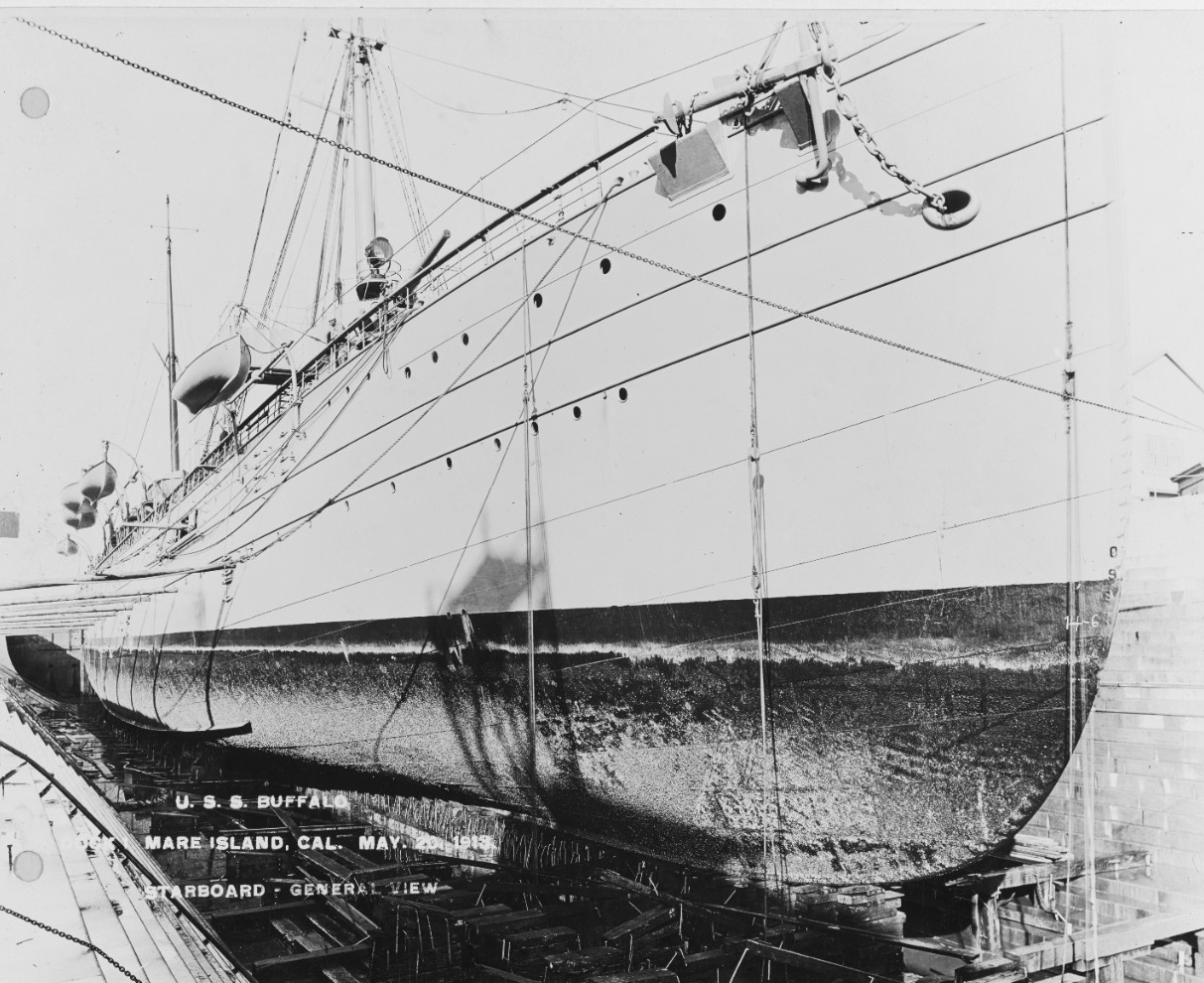
After spending the next two weeks in San Francisco Bay, Buffalo cleared Mare Island on 19 June 1913 and steamed to San Diego (21 June) and after spending time surveying a shoal with a Sigsbee deep-sea sounding machine (22-30 June), made a return to Mare Island. While there she took on stores for a deployment to Mexican waters to protect American interests there. Departing on 15 July, she cruised along the Mexican coast until 17 September, when she stood in to San Diego to disembark American refugees taken on board at Guaymas, Mexico on 12 September. She then steamed north to San Francisco to coal (19-20 September), then docked at Mare Island for repairs (20 September-16 October). After taking on additional coal at Tiburon, Calif. (16-17 October), she shifted to San Francisco to participate in the Portola celebration (17-27 October). Afterward, she stood out from the Golden Gate and proceeded to Corinto (6 November-11 December). She departed bound for Amapala. Arriving on 11 December, she embarked the Panama-Pacific International Exposition Commissioners and conveyed them to Corinto (12-15 December). She moved to Balboa for the Christmas holidays and to coal (18-29 December).
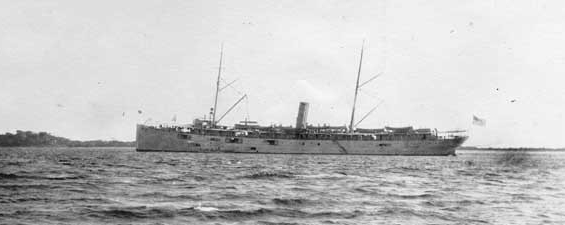
Underway on New Year’s Eve, Buffalo arrived at Corinto to protect U.S. interests there on 1 January 1914. She stood off the Nicaraguan port as a station ship until 11 February, when she departed for San Diego via Mazatlan, Mexico (17 February). She remained at San Diego (21 February-28 March), conducting target practice while there. She steamed to San Francisco; arriving on 30 March, she was towed into the yard at Mare Island by Unadilla (Harbor Tug No. 4) and underwent repairs until 3 May. Upon clearing the yard, she took on stores at San Francisco (3-5 May), then after coaling at Tiburon, steamed out of San Francisco Bay on a heading north to Alaska. As she had in 1911, Buffalo repaired and provisioned the wireless station in Alaska (17 May-21 October).
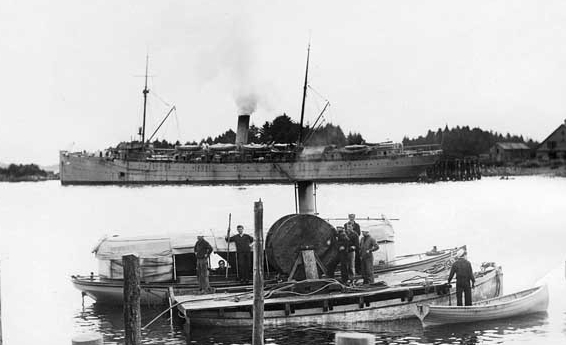
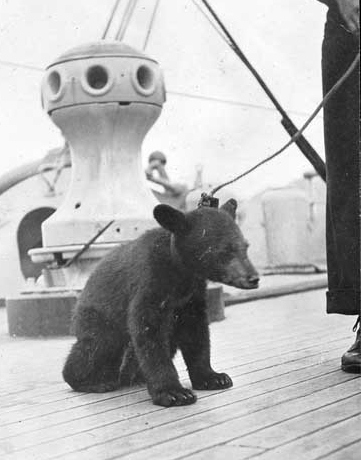
After over five months in Alaskan waters, Buffalo stood in to Mare Island on 27 October 1914, to take on supplies for the U.S. ships deployed in Mexican waters in order to protect American interests there. After coaling at Tiburon (6-8 November), she stood out from San Francisco on the 9th. After delivering stores to the U.S. ships, she returned to San Francisco on 6 December, and shifted to Mare Island, the next day. Buffalo was detached from the Pacific Fleet on 14 December 1914 and placed out of commission at Mare Island on 27 January 1915.
Buffalo was placed back into commission at Mare Island on 29 November 1915, Cmdr. Mark S. Ellis in command. Two days later, 1 December, she was re-assigned to the Pacific Fleet. Her return to active duty saw her depart Mare Island on 9 December to make a passage to Topolobampo to receive the Marine Detachment from San Diego (Armored Cruiser No. 6). She rendezvoused with the armored cruiser (17-18), then shifted to Guaymas (19 December-21 January 1916) to await orders. She then served on transport duty (21 January-10 February). Arriving at San Francisco on 10 February, she shifted to Tiburon to receive stores for Marine detachments (10-11 February) then returned to San Francisco to coal (11-15 February). She then departed, arriving at San Diego on 17 February. She operated from that port until 29 March, during which she towed a target for San Diego’s gunnery practice. Clearing San Diego, she cruised the waters off the Mexican Pacific coast conducting regular port visits into March 1917. Buffalo returned to San Diego on 3 March 1917 and two days later, the Commander-in-Chief, Pacific Fleet temporarily shifted his flag from Pittsburgh (Armored Cruiser No. 4) to Buffalo. The Commander-in-Chief returned to Pittsburgh on 9 March. Afterward, Buffalo stood out from San Diego and returned to cruising her station along the Mexican coast. During this time the U.S. declared war against Germany on 6 April.
Buffalo returned to San Diego on 29 April 1917, but was underway again the next day bound for Puget Sound Navy Yard, Bremerton, Wash. Arriving on 6 May, she spent a fortnight in the yard. Upon clearing on 20 May, she steamed directly across the Pacific with the Special Diplomatic Mission of the United States to Russia embarked and stood in to Vladivostok, Russia, on 3 June. She remained there until 9 June, when she went to sea and set course for Yokohama, Japan. Reaching her destination on 12 June, she remained almost a month, departing on 11 July to make her return to Vladivostok. Having reached her destination on 14 July, the auxiliary cruiser, stood in the harbor until 21 July, when she got underway to make her return to the U.S. Touching briefly at Seattle, Wash., on 4 August, she shifted to the Puget Sound Navy Yard, that same day. Underway again the next day, 5 August, she proceeded to Mare Island. Entering the yard upon her arrival on 8 August, she docked and underwent maintenance until 16 September. After shifting to San Francisco, Calif., she cleared San Francisco Bay on 21 September bound for Balboa, C.Z. While en route on 25 September 1917, she received orders to the Philadelphia (Pa.) Navy Yard. Reaching Balboa on 2 October, she was detached from the Pacific Fleet on 3 October, and transited the Panama Canal to Cristóbal on the 4th. Clearing that same day, she stood in to Hampton Roads on 10 October. She shifted the next day to Piney Point, Md. (11-13 October), before she steamed out into the Atlantic to make her way to the Philadelphia Navy Yard, arriving on 14 October.
Buffalo, while at the Philadelphia Navy Yard on 5 November 1917, was ordered to fit out as a tender to 18 destroyers and 36 submarine chasers. The conversion work was completed and on 5 June 1918, she cleared Philadelphia and steamed down the Delaware River with paravanes on board. Once into the Atlantic, she turned north, bound for Newport, R.I. (Base No. 12); where she arrived on 7 June. She took torpedo equipment on board for both herself and the destroyer tender Prairie. She also received a draft of 87 sailors and 75 marines for Pota Delgada, Azores (Base No. 13). With orders to proceed via Bermuda, the British Governor of Bermuda was also embarked. Clearing Narragansett Bay on 10 June, she was accompanied by the Coast Guard cutter Tuscarora and six subchasers. They arrived off the Royal Navy dockyard on the 14th. Buffalo would remain at Bermuda until 7 July, when she got underway as flagship for a convoy bound for Ponta Delgada. The convoy consisted of the destroyer tender Bridgeport; the oiler Arethusa; the converted yacht Wadena (S. P. 158); the fleet tugs Conestoga (Id. No. 1128) and Arapaho (Fleet Tug No.14); the salvage tug Favorite (Id. No. 1385); East Hampton (S. P. 573); and the tug Arctic (Id. No. 1158); one army tug with a barge; three French tugs, and five divisions of submarine chasers (28 in all). Conducting underway refueling while en route, the convoy reached the Azores on 20 July. After a week in port, the convoy resumed its transit, minus three subchasers and with the addition of a French yacht, bound for Brest, France (Base No. 7). Given the distance of the voyage and the limited range of the subchasers, the latter had to be towed through the danger zone in to the French port. While en route on 5 August, Bridgeport reported a torpedo wake passing five feet astern. In response the destroyer tender fired several rounds from her 5-inch gun in the general direction of the believed position of the firing submarine. Smith (Destroyer No. 17), which had sortied from the French coast to escort the convoy into port, and several of the subchasers nearby hunted for the U-boat and dropped depth charges. Smith and Fanning (Destroyer No. 37) and four subchasers persisted in their search while the convoy continued its passage in to port; arriving later that day.
Buffalo departed Brest on 16 August 1918 escorted by Flusser (Destroyer No. 20) and Preston (Destroyer No. 19) bound for Gibraltar (Base No. 9). Upon her arrival at the British possession, she was to serve as the base repair ship and began repairs to Dale (Destroyer No.4), Venetia (S. P. 431), the Coast Guard cutter/ocean escort Tampa. Despite the fact that hostilities ended with the Armistice of 11 November, Buffalo would serve in this capacity through 7 February 1919. In that time she repaired Wenonah (S. P. 165), Wadena, Chester (Scout Cruiser No. 1), Castine (Gunboat No. 6), Surveyor, Druid (S. P. 321), Dyer (Destroyer No. 84), Orion (Fuel Ship No. 11), Sacramento (Gunboat No.19), armed yacht Cythera (S. P. 575), and Birmingham (Scout Cruiser No. 2) along with other ships.
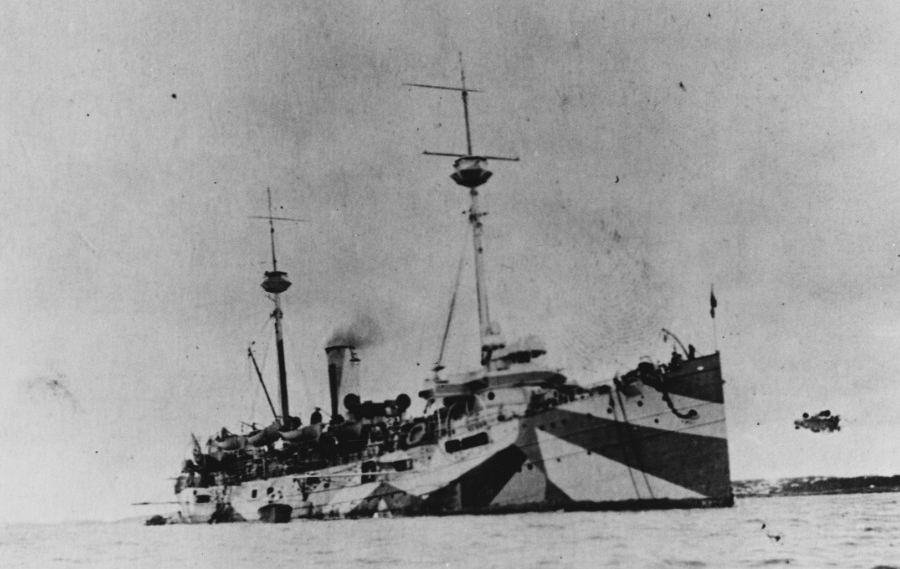
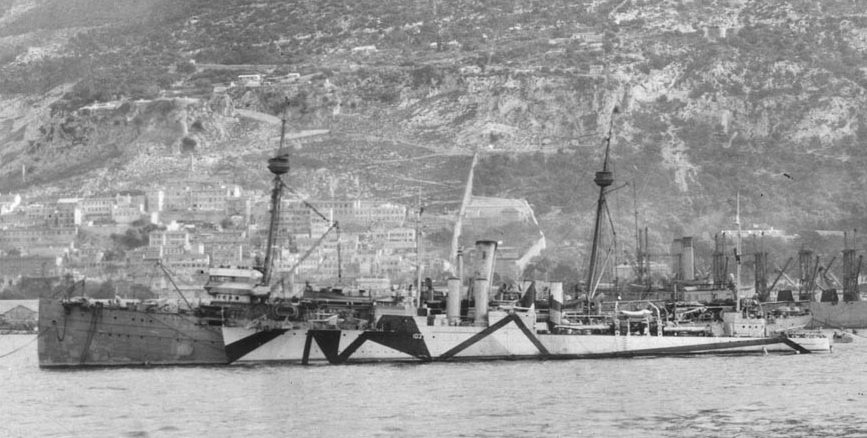
Buffalo cleared Gibraltar on 7 February 1919. Bound for Villefranche, she reached on 10 February. After a six-day port visit, she departed on 16 February for a return to Gibraltar.
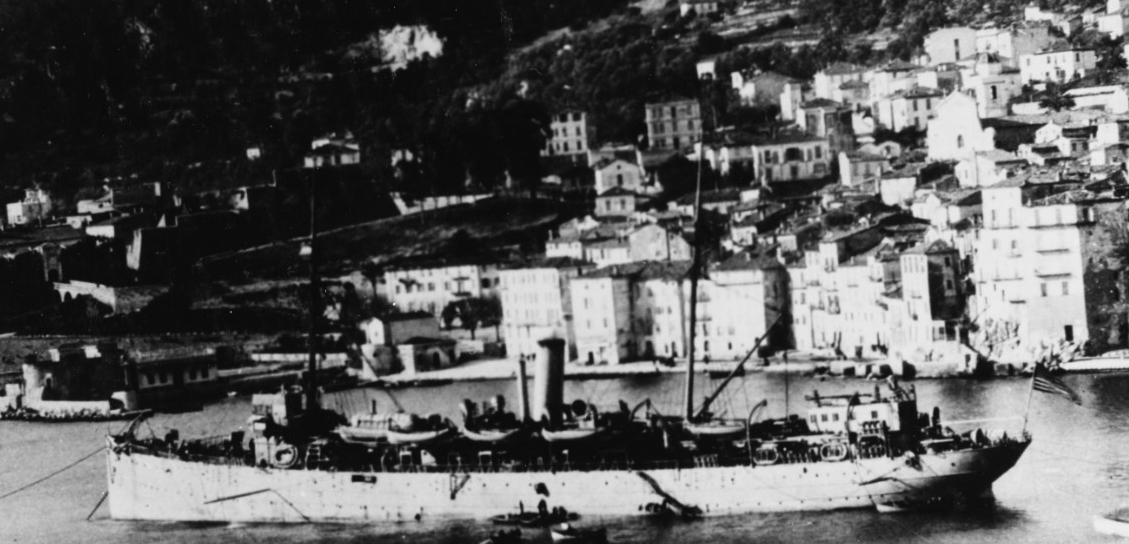
Arriving on 19 February 1919, she only remained for two days, before getting underway on the 21st for Ponta Delgada to serve as a repair ship at Base No. 13. Reaching on 25 February, she continued to serve as repair ship until 16 September. During this time, 22 May 1919, a memorandum was dispatched from U.S. Navy Headquarters at Grosvenor House, London, England (SIMSADUS) to the Office of the Chief of Naval Operations (OPNAV) that Buffalo could not be spared from her duties at Ponta Delgada and as a result the destroyer tender Panther was dispatched to duty with the minesweeping forces at Kirkwall, Scotland.
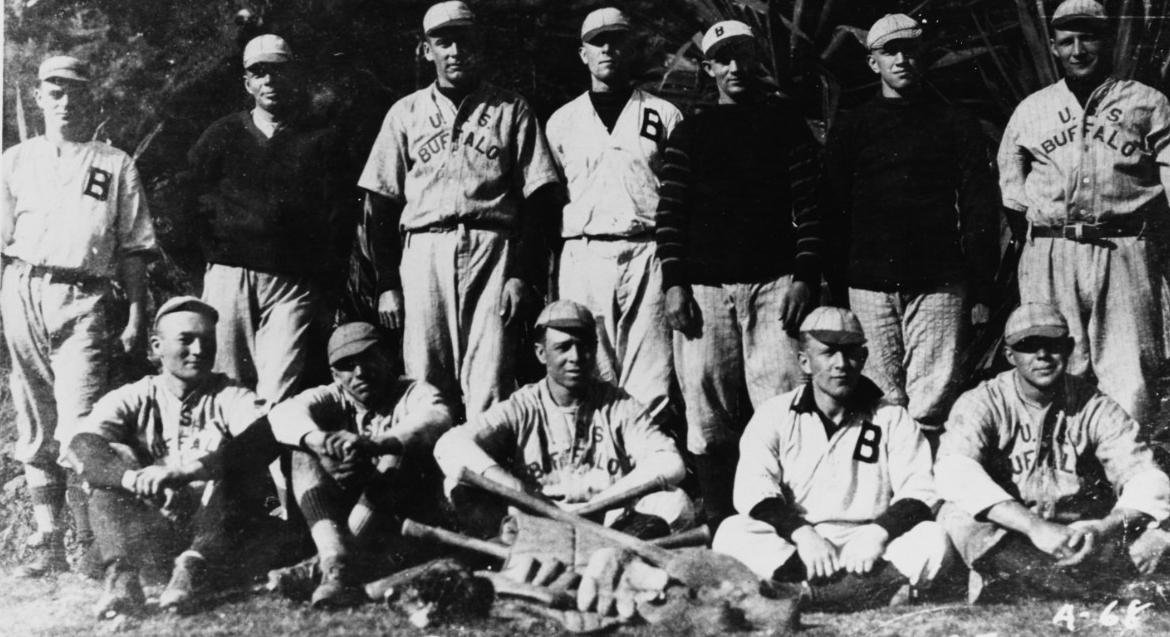
Departing the Azores on 16 September 1919, she made her return to the U.S. at New York on 24 September, steaming up the Hudson River to the North River anchorage. While at the anchorage on 5 November, Buffalo collided with the newly-commissioned Aulick (Destroyer No. 258), prompting the convening of a board of investigation that same day on board the destroyer. She remained in the North River until 4 December, when clearing the Hudson, she steamed for Newport. Arriving on 5 December, she departed that same day bound for the Canal Zone (C.Z.). Reaching Cristóbal on 12 December, she transited the Panama Canal to Balboa, from whence she departed on 18 December. Buffalo arrived at San Diego, Calif., on 28 December to commence her duties as repair ship and tender to Destroyer Squadrons 11 and 5, Pacific Fleet.
Buffalo cleared San Diego on 11 January 1920 and steamed northward to the Navy Yard at Mare Island. Arriving on 15 January, she entered the yard and docked. Clearing the yard on 1 March, she touched at San Pedro, Calif. (3 March), before returning to San Diego on the 4th. She remained in port until 4 November. During this time, on 17 July 1920, Buffalo was re-designated (AD-8) as part of a Navy-wide administrative re-organization. Getting underway, she made a visit to San Pedro (4-8 November), then return to San Diego. The tender then spent the Christmas and New Year’s holidays in port. She got underway again on 2 January 1921 and steamed to Mare Island, where the pilot ran her aground on 5 January as she maneuvered to enter the yard. Fortunately, there was no resultant damage to the ship. She docked and underwent maintenance (5 January-1 March). Upon leaving the yard, she cruised the California coast from March to 9 November making port visits of varying lengths at San Francisco, Calif., San Pedro, Venice, Calif. and San Diego. Having received orders to transfer to the Asiatic Station to serve as tender to the Destroyer Squadron, Asiatic Fleet, she docked at Mare Island for pre-deployment maintenance (9-15 November). Clearing San Francisco Bay on 15 November, she reached Honolulu, Hawaiian Territory (H.T.) on 23 November. Continuing her passage westward, she cleared Honolulu on 30 November and steaming via Guam (13-15 December), stood in to the Navy Yard at Cavite, P.I., and her new duties in the Philippines, on 20 December.
Buffalo remained at Cavite until 10 June 1922 when she cleared Manila Bay and steamed to Shanghai, China, reaching on 15 June. The tender stood down the Yangtze on 5 July, bound for Chefoo [Yantai]. She arrived on 8 July and remained there until 4 September. Crossing to Japan, she arrived at Yokohama on 8 September. Departing on 13 September, she steamed eastward to make her return to the U.S. via Honolulu (24-30 September). Standing in to Mare Island on 8 October, she docked until the 26th. Clearing the yard, she proceeded to San Diego, where she arrived two days later. Buffalo was decommissioned at San Diego on 15 November 1922.
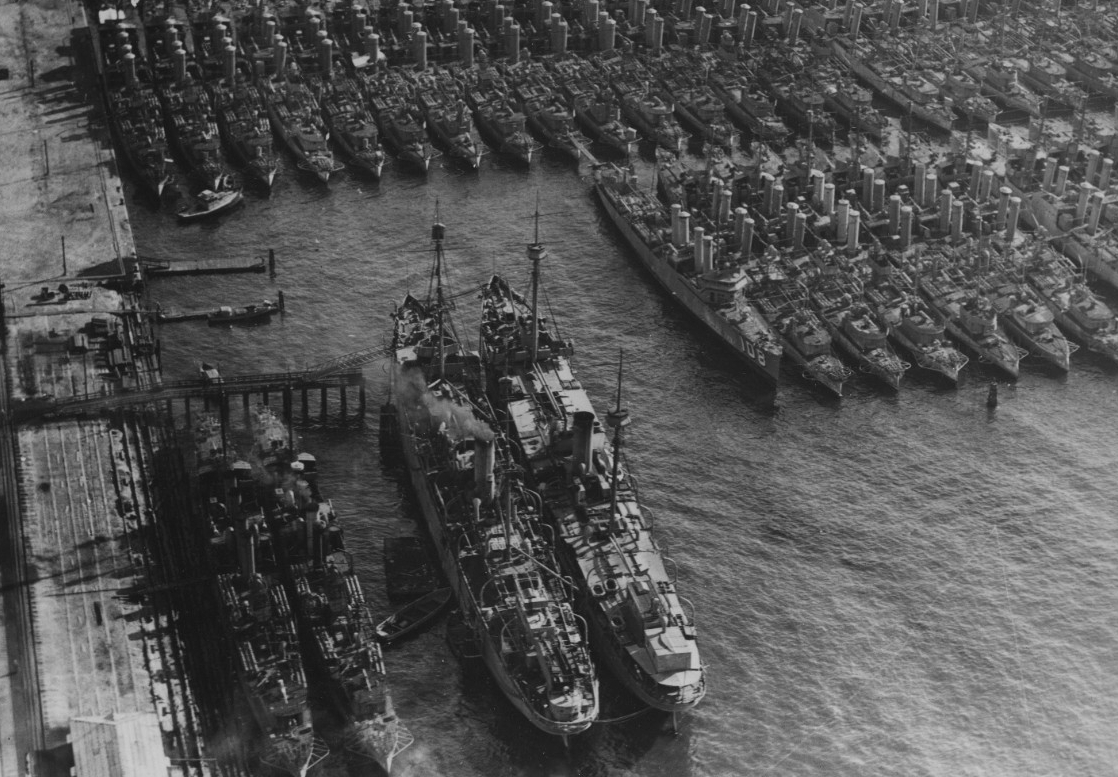
Buffalo served as a barracks ship there until her name was stricken from the Navy list on 27 May 1927. She was sold to Vincente Madrigal & Co., Manila, on 28 September 1927.
| Commanding Officers | Dates of Command |
| Cmdr. Joseph N. Hemphill | 22 September 1898 – 3 July 1899 |
| Cmdr. Charles T. Hutchins | 2 April 1900 – 10 May 1902 |
| Capt. Albert Ross | 10 May 1902 – 14 December 1903 |
| Capt. William H. Everett | 14 December 1903 – 4 April 1905 |
| Cmdr. John F. Parker | 17 November 1906 – 13 April 1907 |
| Cmdr. Charles F. Pond | 13 April 1907 – 6 June 1908 |
| Cmdr. Frank M. Bostwick | 6 June 1908 – 28 April 1909 |
| Cmdr. Guy W. Brown | 28 April 1909 – 21 March 1910 |
| Cmdr. Clarence M. Stone | 21 March 1910 – 8 June 1912 |
| Cmdr. DeWitt Blamer | 8 June 1912 – 3 October 1913 |
| Cmdr. Montgomery M. Taylor | 3 October 1913 – 27 January 1915 |
| Cmdr. Mark S. Ellis | 29 November 1915 -15 July 1916 |
| Lt. Cmdr. Pope Washington | 15 July 1916 – 8 May 1917 |
| Cmdr. Alfred D. Hinds | 8 May 1917 – 11 August 1917 |
| Lt. Cmdr. John H. Blackburn | 11 August 1917 – 16 August 1917 |
| Lt. (j.g.) Frank H. Kelley | 16 August 1917 – 7 September 1917 |
| Capt. Charles M. Tozer | 7 September 1917 – 21 October 1919 |
| Capt. Frederick J. Horne | 21 October 1919 – 22 May 1920 |
| Cmdr. John V. Babcock | 22 May 1920 – 12 November 1921 |
| Cmdr. Robert A. Abernathy | 12 November 1921 – 15 November 1922 |
Christopher B. Havern Sr.
10 April 2018


